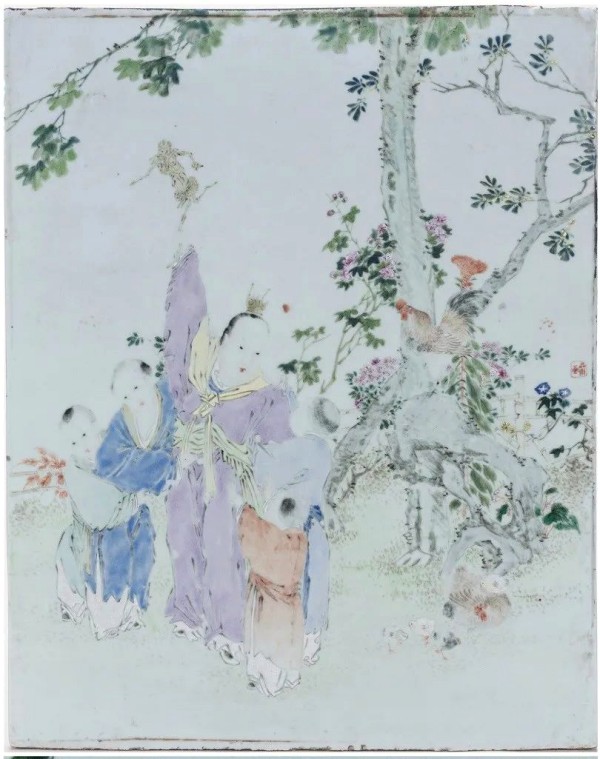
Jin Pinqing Porcelain Plaque with Five Boys Competing, Qing Dynasty, Guangxu period (1875-1908).
Unusual human motif, compared to his more common floral and landscape subjects. "Painted by Pinqing" stamp on its edge. The scene depicts children playing, symbolizing scholarly success, draws from the Five Dynasties period story of Dou Yu Jun teaching his sons.
Jin Pinqing, with the given name Gao and the sobriquet Hanfeng Shanren, also known as Huan Cui Ting Zhai, was a native of Yi County, Anhui Province. He was active from the first year of the Tongzhi era to the thirty-fourth year of the Guangxu era in the Qing Dynasty (1862-1908), serving in the Jingdezhen Imperial Kiln Factory.
He was a renowned master of light Jihong (red) porcelain painting in the early Guangxu years, acclaimed alongside Wang Shaowei as one of the Two Brushes of the Imperial Kiln."
Together with Cheng Men and Wang Shaowei, he was known as one of the "Three Great Masters of Qianjiang". The original word is Light Crimson. The better known Qianjiang was not introduced before 1950.
He excelled in painting landscapes, flowers, birds, and figures in light Jihong. His landscapes often emulated the styles of famous artists from the Southern Song dynasty and Shen Shitian from the Ming dynasty; his flower and bird paintings followed the Hwa Seo school, characterized by a free and easy brushwork and elegant coloring; his figure paintings bore the influence of Huang Shen, marked by vigorous and bold strokes; his calligraphy in semi-cursive and cursive script had the remnants of Dong Qichang's style, being leisurely and comfortable, making him an outstanding porcelain painting master in the late Qing dynasty.
See also: Qianjiang (style)
A